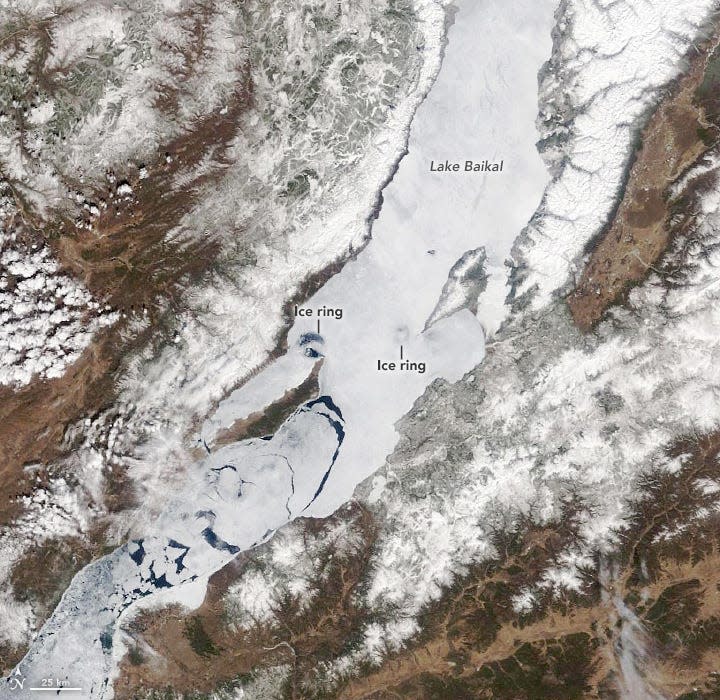What is causing the mysterious giant 'ice rings' in Siberia?
Strange ice rings in Siberia's Lake Baikal have puzzled scientists for decades, but now the mystery apparently has been solved.
The answer: The rings are caused by warm, circular currents of water under the ice, called eddies.
The eddies' strong currents melt the ice at the edge, but weaker ones keep the center frozen.
“Results of our field surveys show that ... there are warm eddies that circulate in a clockwise direction under the ice cover,” said Alexei Kouraev, a hydrologist at the University of Toulouse, in a NASA statement.

“In the eddy center, the ice does not melt – even though the water is warm – because the currents are weak," he said. "But on the eddy boundary, the currents are stronger, and warmer water leads to rapid melting.”
During field work, Kouraev and his colleagues drilled holes near ice rings and deployed sensors capable of measuring the temperature and salinity of the water to a depth of 700 feet. Typically the water in the eddies was 2 to 4 degrees Fahrenheit warmer than the surrounding water.
Most of the rings appear in March or April and have diameters of about 3 to 4 miles – too big to recognize from the ground but easily seen from satellites above. Some rings were ephemeral, lasting a day or two. Others persisted for weeks or even months.
Many scientists had thought the giant ice rings were formed by methane gas emissions from the lake's bottom, but the new research suggests otherwise.

The ice rings have also been attributed to numerous causes, including atmospheric or biological effects, elaborate hoaxes and even the activities of aliens, Gizmodo said.
Lake Baikal is the world’s largest and deepest freshwater lake, according to Gizmodo. It’s home to many varieties of fish not seen anywhere else in the world, and even a population of freshwater seals.
Researchers are still investigating what causes Baikal's eddies but think it's likely because of wind patterns, rivers that flow into the lake and the shape of the lake's coastline and bottom.
Kouraev's research was published late last year in the journal Limnology and Oceanography.
This article originally appeared on USA TODAY: Ice rings in Siberia: Scientists think eddies are the cause

